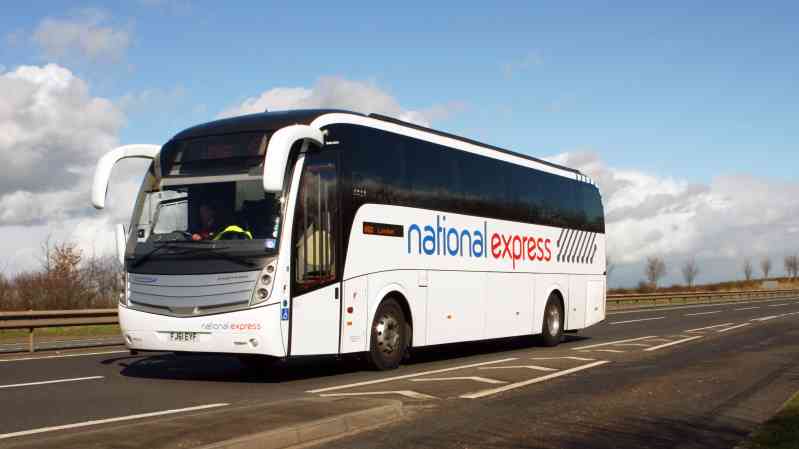Starbucks looks too frothy for comfort
For Starbucks fans, the dizzying menu of lattes, frappuccinos, fruity iced drinks and teas is key to the 53-year-old coffee chain’s modern appeal. There are more than 170,000 ways to customise a Starbucks drink. Fancy a venti iced brown sugar oat milk shaken espresso? A few minutes and about £5 later, it should be yours to enjoy.
However, fewer people are willing to shell out for drinks at these prices. This summer Starbucks reported its second consecutive quarterly drop in sales, citing a “cautious consumer environment”. Global comparable sales dropped by 3 per cent in the three months to the end of June, after a 4 per cent decline in the previous quarter.
The Seattle-based coffee chain is now in turnaround mode, having removed its chief executive Laxman Narasimhan (who had joined from Reckitt Benckiser, the London-listed consumer goods business), replacing him with the Brian Niccol, an industry darling who was the boss of Chipotle Mexican Grill, the restaurant chain.
The market was impressed. Shares in Starbucks rose by nearly 23 per cent, while Chipotle by fell more than 13 per cent. This rather reflected the fact that Niccol had enjoyed an impressive stint at Chipotle. After he joined in 2018, sales more than doubled to hit almost $10 billion last year. So can he recreate the magic for Starbucks shareholders?
Starbucks was launched in the 1970s to bring Italian-style espresso to Americans. It introduced frappuccinos in 1995 and cold-brew coffee in the 2010s. Today social media favours colourful drinks featuring exotic flavours, such as the bright pink dragon fruit refresher.
About three quarters of Starbucks’ $36 billion in annual sales are made in the United States, with the remainder spread mostly in Asia and Europe. But in America, its huge range of options for customisation means that staff spend too long on a single drink, meaning that customer waiting times have suffered. This, in theory, could be resolved easily enough with investment in staff and store efficiency.
Starbucks’ problems in China are trickier. It was among the first western coffee chains to set up in the country in the late 1990s, but in recent years younger players such as Luckin and Cotti have snatched market share, growing rapidly on the back of lower prices and quick delivery. Starbucks has struggled to keep pace. Revenue at its 7,306 Chinese stores fell by 11 per cent in its most recent quarter.
It will come down to Niccol to decide whether to sharpen up or pare back Starbucks’ business in China. That said, the recent and sudden drop in global comparable store sales (down 3 per cent in the latest quarter, compared with a 10 per cent rise a year earlier) may be down to a more sudden cause, analysts at the Bank of America believe. They suggest it is partially the result of a social media-driven boycott prompted by Starbucks’ position in the Middle East. Its net promoter score, which measures how likely customers would be to recommend the service to a friend, dropped sharply in late 2023 and has not recovered. The only previous decline this big was in the summer of 2018, when the chain also suffered negative social media attention.
The market is pinning its hopes on Niccol’s impressive track record, but the problems at Starbucks seem much more complicated than those that faced at Chipotle in 2018. No doubt Niccol, 50, will be watched closely by Howard Schultz, 71, the former (and very vocal) three-time chief executive. He remains the company’s sixth largest shareholder, with an investment worth $22 million.
After the recovery in its share price, Starbucks now trades at 26.6 times forward earnings, compared with McDonald’s and Wendy’s, the fast-food chains, which have multiples of 23.6 and 17.1, respectively. This seems a steep price tag for a company and a new boss that have much to prove, not least because of Niccol’s controversial pay package of $113 million if he hits his targets from a “small remote office” at his home in Newport Beach, California, 1,191 miles away from Starbucks’ headquarters in Seattle.
Advice Avoid
Why High price tag assumes success of complex turnaround
North American Income Trust
There aren’t many investment trusts that specialise in American stocks that trade at cheaper levels than their underlying assets. Therefore, while a double-digit discount at the £400 million North American Income Trust may seem like a rare opportunity, it should also trigger some alarm bells.
The fund switched management from Abrdn to Janus Henderson at the start of this month after a long period of under-performance. It had produced a total net asset value return of 256 per cent since the tail end of May 2012, when Fran Radano took over as manager, to the end of July this year, according to Deutsche Numis, the broker, compared with a 350 per cent return in the Russell 1000 Value index (although this was also because of the fund’s focus on dividend income as well as capital growth).
Radano will join Janus Henderson in November as co-manager of the trust, alongside Jeremiah Buckley, a member of Janus Henderson’s American stocks team who has eight years of experience as a portfolio manager. Janus Henderson is a well-respected asset manager that already manages 11 other trusts. However, the continuation of Radano on the fund suggests there is unlikely to be a significant change in the investment style, which may surprise shareholders, given its recent under-performance.
Still, investors will benefit from an improved cost structure, with Deutsche Numis calculating that the blended fee will drop from 0.68 per cent to 0.55 per cent. Janus Henderson is also waiving up to three months’ management fees to offset the costs of switching managers.
The fund’s official aim continues to be to provide investors with above-average dividend income and long-term capital growth by picking stocks that are mostly in the S&P 500, New York’s benchmark index. From an income perspective, the trust does have a decent track record of 13 years of consecutive dividend rises. The shares yield 3.8 per cent, just above the FTSE 100 at 3.7 per cent.
No doubt investors will be watching North American Income closely in the coming months, but, given the recent changes, we prefer to stay on the sidelines, despite the temptation of the double-digit discount.
Advice Hold
Why Await more consistent returns




Post Comment